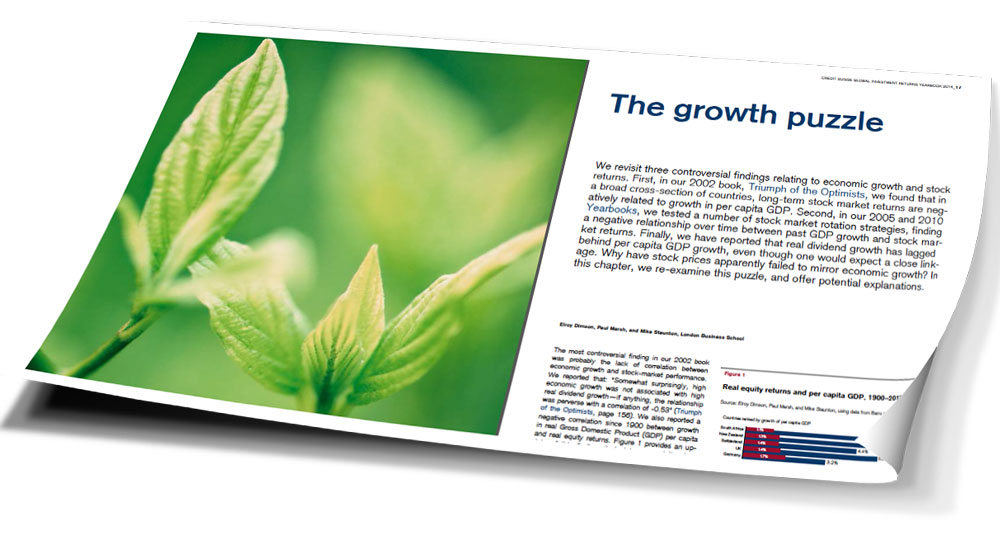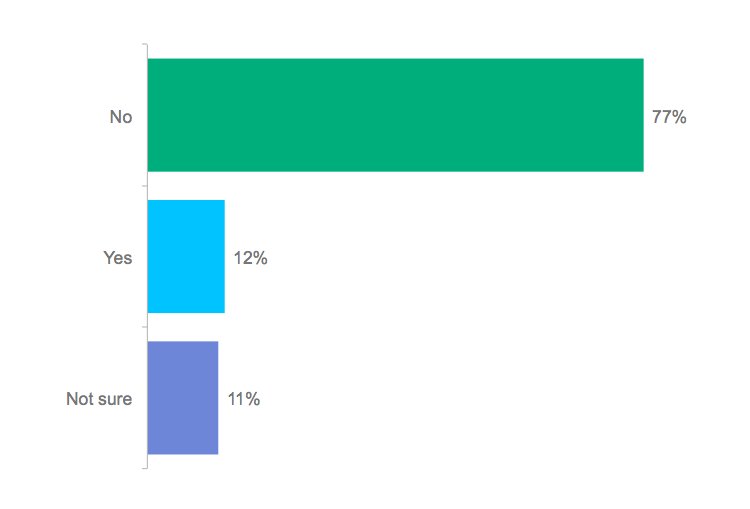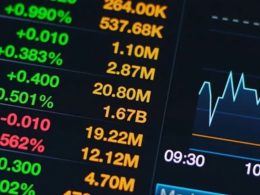CSFB publishes the Global Investment Returns Yearbook each year, and it is a gem. It is their yearly update to their investing book, Triumph of the Optimists.
Emerging Markets Revisited, The Growth Puzzle, and A Behavioural take on Investor Returns
Introduction
The recovery in developed world economies now appears to be well under way, with the Federal Reserve beginning to reduce its third program of quantitative easing. In particular, European financial markets and economies are in much better health than this time last year. However, with the business cycle upturn manifest in countries like the USA and UK, there are concerns that some emerging countries will find that higher interest rates create a more challenging market environment. In this context, the Credit Suisse Global Investment Returns Yearbook 2014 examines the relationship between GDP growth, stock returns and the long-run performance of emerging markets.
The 2014 Yearbook now contains data spanning 114 years of history across 25 countries. The companion publication, the Credit Suisse Global Investment Returns Sourcebook 2014 extends the scale of this resource further with detailed tables, graphs, listings, sources and references for every country. Elroy Dimson, Paul Marsh and Mike Staunton from the London Business School analyze this rich dataset in order to help investors understand what they might expect from the markets in coming years.
While there is considerable attention on emerging markets today, the Yearbook takes the long view by examining the historical performance of emerging markets over the past century. By constructing an index of emerging market performance from 1900 to the present day, the authors document the historical equity premium from the viewpoint of a global investor. They then show how volatility dampens as countries develop, study trends in international correlations, document style returns in emerging markets, and explore trading strategies for long-term investors in the emerging world.
With a focus on the recovery in developed economies, the report also revisits the analysis of the 2010 Yearbook that demonstrated a weak, negative relationship between past GDP growth and stock-market returns over time. While stock markets do anticipate economic growth, the authors fail to find a strong relationship between robust economic growth and subsequent equity performance, and explore the possible reasons for this finding.
Finally, Michael Mauboussin brings to bear his extensive expertise in the area of behavioral finance in discussing the well-documented tendency for investors to buy after the market has risen and to sell following a drop. He shows that the asset-weighted returns investors earn are almost always less than the time-weighted returns of the funds in which they invest. This is particularly topical with 2013 having been an impressive year for many equity markets.
He then provides advice on how investors can overcome this behavioral bias by placing more weight on the long-run and less on recent outcomes.
We are proud to be associated with the work of Elroy Dimson, Paul Marsh, and Mike Staunton, whose book Triumph of the Optimists (Princeton University Press, 2002) has had a major influence on investment analysis. The Yearbook is one of a series of publications from the Credit Suisse Research Institute, which links the internal resources of our extensive research teams with worldclass external research.
You can read/download the entire report below:
Global Investment Returns Yearbook 2014
Copyright © © 2014 Credit Suisse Group AG













